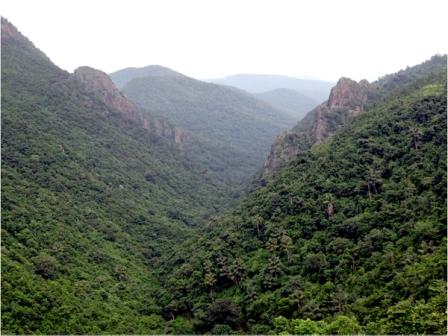STRAP: A practicable heritage site management plan will be developed by members of Sugadabadi and Gumamaha GPs and Phulbani Forest Division for Mandasaru, a unique gorge ecosystem in Kandhamal district, in next few weeks and other potential biodiversity heritage sites will be identified in the state
Nidhi Sinha, OP
BHUBANESWAR: Among many little known wildernesses of the state lies a unique gorge ecosystem in the Raikia block of Kandhamal district called Mandasaru—named after two narrow rocks surrounded by dense tropical moist deciduous forests.
Considered the ‘Silent Valley of Odisha’ due to its frequent weather changes from limpid clear sky to foggy and abrupt rain, Mandasaru is one of the least recognised special habitats of the state. Even though it is strikingly similar in appearance and climate with the Silent Valley of ‘Western Ghats’, its scenic and mesmerizing beauty and rich biodiversity has been obscured to rest of the world for a long time.
As per a recently published book titled ‘Mandasaru: the biological paradise of Eastern Ghats of India’, the gorge is an abode for 1563 species of plants, animals and fungi within an area of 528 ha. The flora of the gorge is represented with ca. 831 species of higher plants. This includes 52 species of grasses, 36 species of orchids, 59 species of pteridophytes and two species of gymnosperm.
The lower group of plants also significantly contributes to the floral richness of the gorge. This includes 70 species of bryophytes and 72 species of lichens. In addition to these, over 130 species of fungi including 34 species of edible mushrooms were also occurring in the gorge. Out of 41 species of medicinal plants categorized under various threatened categories by FRLHT, Bangalore, six such plant species occur here. In total 23 species of plants can be considered as threatened and 3 species are endemic to the gorge.
The gorge harbours terrestrial, aquatic, arboreal and cave dwelling fauna comprising 28 species of mammals, 150 species of birds, 30 species of reptiles, 14 species of amphibians and 12 species of fishes. The invertebrate faunal diversity is equally varied as compared to vertebrates. The gorge is home for 148 species of butterflies, two species of crabs, 20 identified species of spiders, 20 species of Odonates (dragonflies and damselflies) and four species beetles.
Mandasaru provides various ecosystem services (provisioning, regulating and cultural ecosystem services) to the dependent communities, which include tubers, fruits, leaves and vegetables, edible mushrooms, medicinal plants and wild beverages throughout the year and in different seasons. The gorge is also a sacred site for the local communities as they worship and conserve a fern (Patharagirdhini) in one of the hill top as their deity and believe that the Manda will protect them from all odds.
A scientist Prasad Kumar Dash, said, “Section 37 of the Biological Diversity Act 2002 provide for declaration of Biodiversity Heritage Sites (BHS) in the state. Rule 20(2) of the Odisha Biological Diversity Rules, 2012 mandates the State Biodiversity Board to frame guidelines on the selection, management and other aspects of Biodiversity Heritage Sites. In pursuance of these provisions, Govt of Odisha has already notified guidelines for BHS and one Mandasaru in Kandhamal district is already notified as the first BHS of the state which required a strong management plan for conservation and sustainable uses of biological resources.”
However, outside protected areas, there exists many such biodiversity rich sites in the entire state of Odisha having potential to qualify BHS and most of them are threatened due to lack of protection and management. Before declaration of BHSs, there is a need to identify such sites and a data base must be generated on social, ecological and biological significance of such sites in Odisha following the guidelines of the BHS.
A practicable heritage site management plan will be developed by the board in consultation with BMC members of Sugadabadi and Gumamaha GPs and Phulbani Forest Division for Mandasaru in next few weeks and other potential BHSs will be identified in the state of Odisha. BMC members will be given full support to develop such plans which will ultimately strengthen biodiversity conservation in Odisha.
